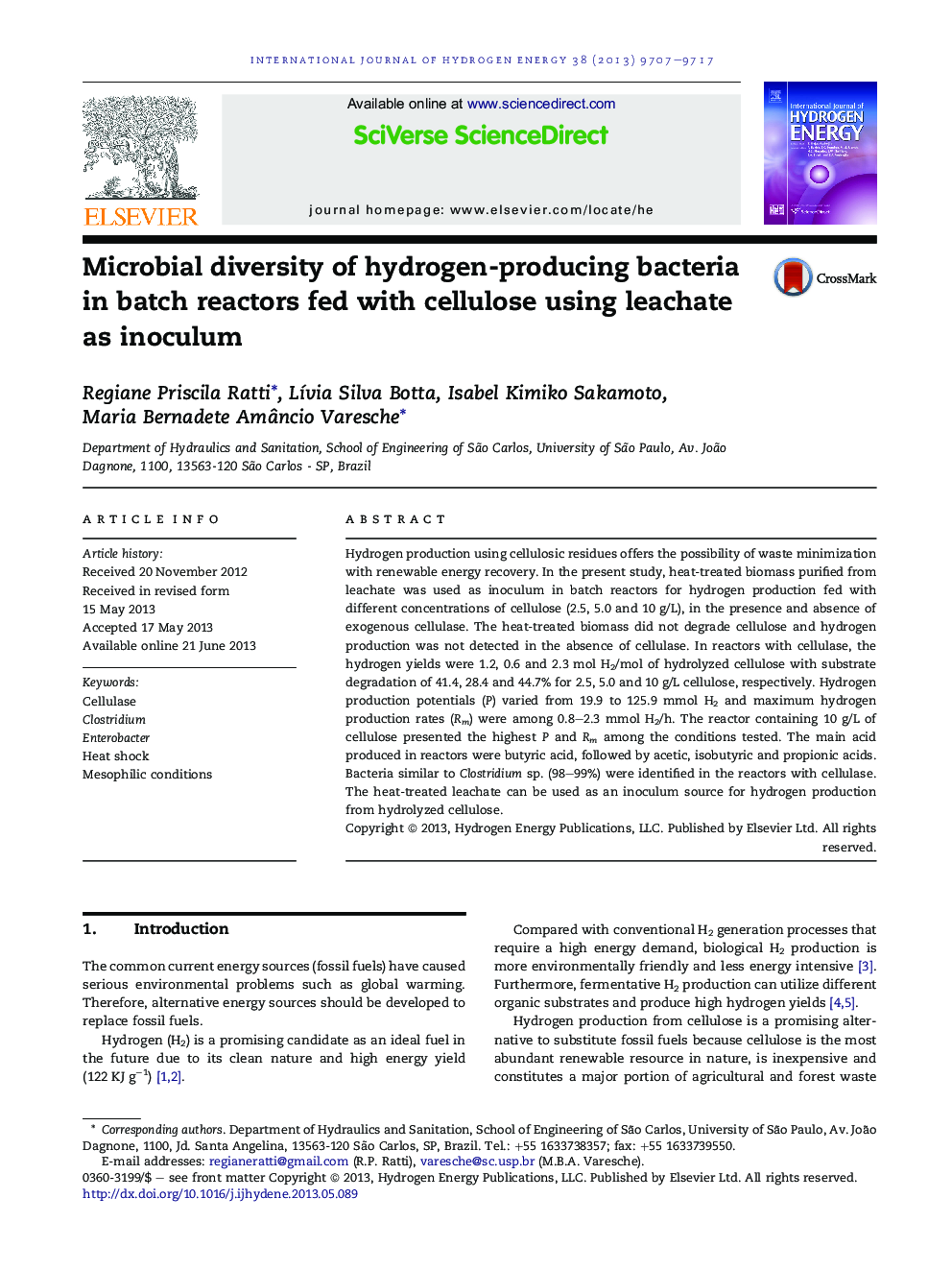| Article ID | Journal | Published Year | Pages | File Type |
|---|---|---|---|---|
| 7722299 | International Journal of Hydrogen Energy | 2013 | 11 Pages |
Abstract
Hydrogen production using cellulosic residues offers the possibility of waste minimization with renewable energy recovery. In the present study, heat-treated biomass purified from leachate was used as inoculum in batch reactors for hydrogen production fed with different concentrations of cellulose (2.5, 5.0 and 10 g/L), in the presence and absence of exogenous cellulase. The heat-treated biomass did not degrade cellulose and hydrogen production was not detected in the absence of cellulase. In reactors with cellulase, the hydrogen yields were 1.2, 0.6 and 2.3 mol H2/mol of hydrolyzed cellulose with substrate degradation of 41.4, 28.4 and 44.7% for 2.5, 5.0 and 10 g/L cellulose, respectively. Hydrogen production potentials (P) varied from 19.9 to 125.9 mmol H2 and maximum hydrogen production rates (Rm) were among 0.8-2.3 mmol H2/h. The reactor containing 10 g/L of cellulose presented the highest P and Rm among the conditions tested. The main acid produced in reactors were butyric acid, followed by acetic, isobutyric and propionic acids. Bacteria similar to Clostridium sp. (98-99%) were identified in the reactors with cellulase. The heat-treated leachate can be used as an inoculum source for hydrogen production from hydrolyzed cellulose.
Related Topics
Physical Sciences and Engineering
Chemistry
Electrochemistry
Authors
Regiane Priscila Ratti, LÃvia Silva Botta, Isabel Kimiko Sakamoto, Maria Bernadete Amâncio Varesche,
